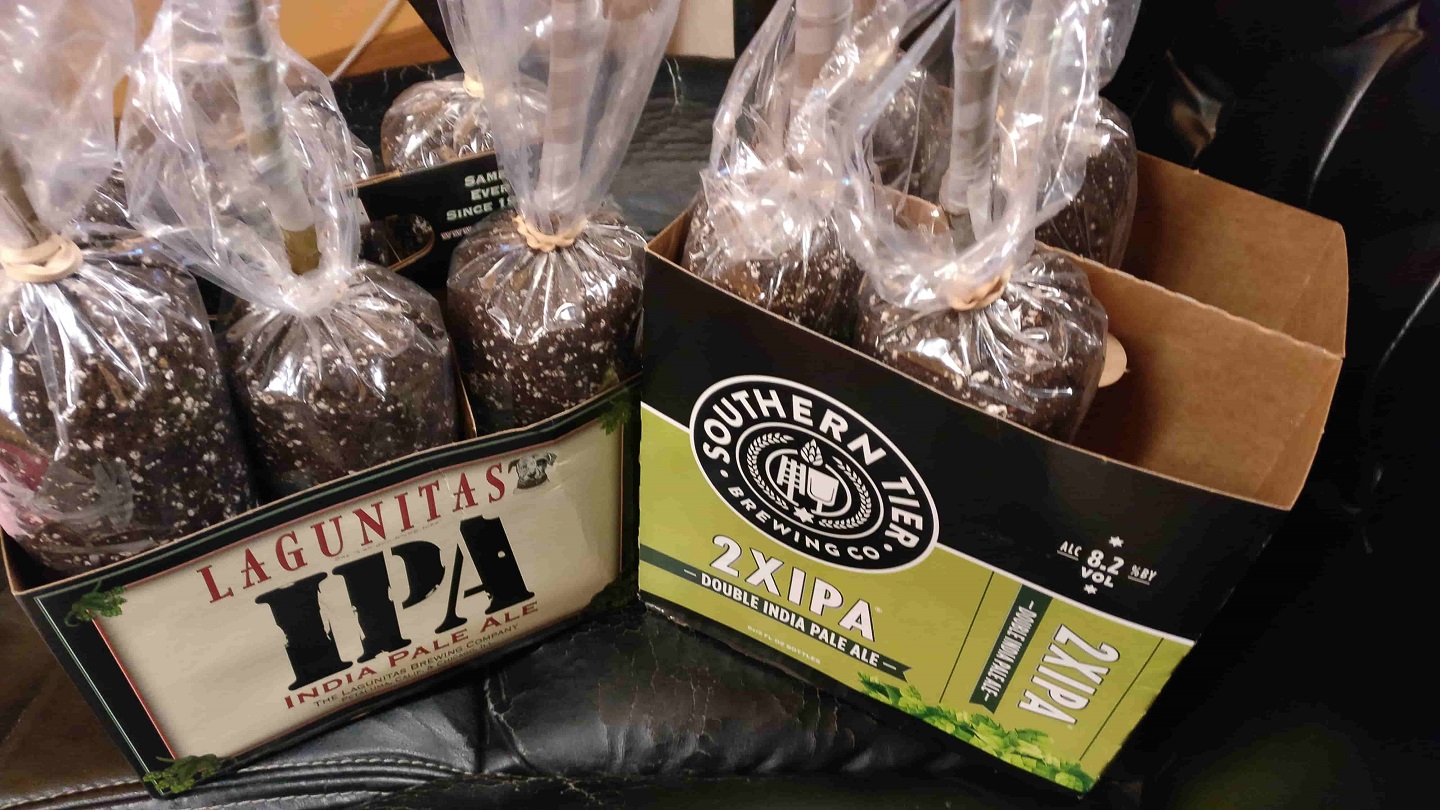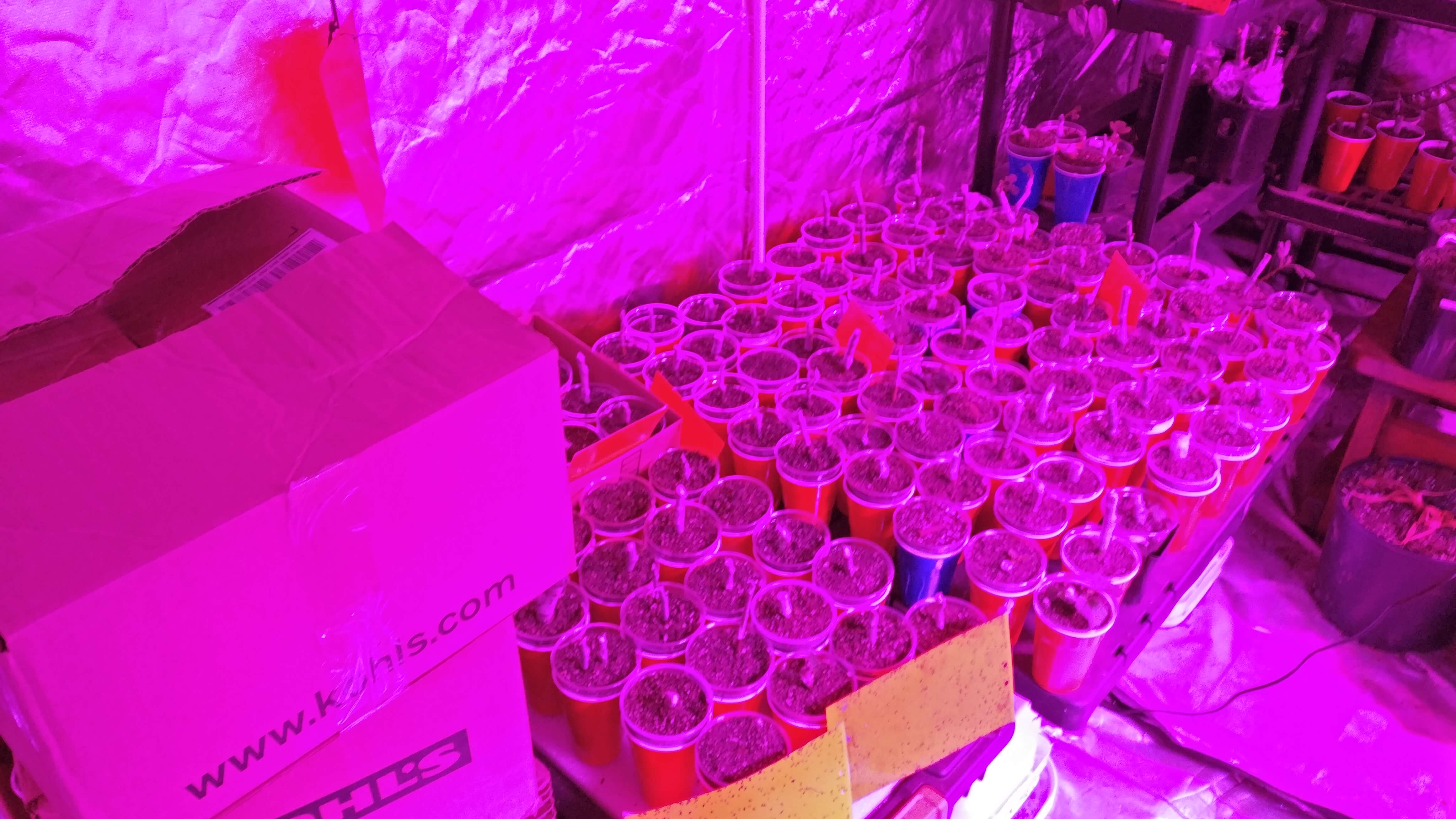The Versatility of Figs
Fig trees – the unsung heroes of sustainable homesteading and (should be) a mainstay in the world of sustainable and organic farming. As a self-sufficient homesteader, I've always admired the resilience and versatility of figs. However, last year, my first foray into the world of attempting to up my propagation game by rooting one-node fig cuttings was met with admittedly pretty terrible results. That time, I planted them directly into cups, with one half of the bud exposed and the other buried in the soil - this approach yielded no success. But every setback is a setup for a comeback. So, armed with some new insights and a pinch of homestead grit, I revisited my fig propagation technique, and this time, success was (mostly) mine!
Just-rooted ‘Figo Preto’ fig tree propagated from a cutting that was about 1.5 inches long and only one node. If you look closely, you can tell the roots have managed to “find” their way to the edge of the cup.
It's no surprise why figs are an ideal fit for self-sufficient homesteading and organic farming. They are a breeze to cultivate, resilient against pests, and bear a fruit that is as delicious as it is versatile. You can eat it fresh, and use it in an absolutely mind-boggling amount of recipes from fancy dishes to extremely rustic fare. And just when you thought you knew figs, the numerous flavors and varieties that exist will take you by surprise. Whether you're a seasoned homesteader or a rookie urban farmer, figs are a fantastic addition to your plant collection.

Fig trees can be extremely productive - and with being so easy to propagate, you could make as many fig trees of your favorite variety as you want!
Refining the Fig Propagation Process
The concept of one-node cuttings sparked my curiosity after reading an excellent post from a long-time member on Ourfigs. This person had successfully propagated a thriving collection of fig trees, hundreds of them, all sprouted from one-node cuttings and as healthy as can be. After reading and re-reading, I believed I had found the crticial error in my previous attempt at rooting these tiny cuttings: he had pre-rooted them in a damp medium before transplanting them into their containers. That was the 'aha' moment for me. I had skipped the vital step of pre-rooting in my previous failed attempt.

Pre-rooted Rockaway Green fig cutting showing adventitious root formation
I became inspired to apply this newfound knowledge to my fig propagation methods. After making a small adjustment to my technique by adding a pre-rooting step, I observed a remarkable impact to my results. The success rate has significantly increased, and productivity has improved compared to our traditional method of using longer cuttings. The addition of pre-rooting has had a significant impact on our success rate.
In the fig propagation realm, there's a saying, or sort of a golden rule: "Roots before shoots". This suggests that fig cuttings should first develop a robust root system to support the growth of leaves and shoots. However, my experiences in the field have led me to believe that if the conditions are just right, nature will find a way to push through, often in unexpected ways.
Nevertheless, it's not all smooth sailing with the one-node cutting method. There are a few challenges to navigate:
-
Careful Handling: These cuttings are tiny and have limited energy reserves, requiring very careful handling to avoid damage.
-
Moisture Management: Ensuring the right moisture balance is crucial for the success of the cuttings. Too dry, and the buds might dry out before sprouting leaves; too wet, and you risk rotting the cutting.

Unfortunately, this cutting dried out too much and died, despite being a relatively thick cutting. Root dieback is often fatal, so make sure to maintain the equilibrium and walk that fine line between rot and desiccation for maximum success
Don't be discouraged if pre-rooting or attempting to root small cuttings doesn't work for you! For larger, or less expensive cuttings, I still rely on the tried and true "Fig pop" method. This is a great option if you're looking to propagate in bulk with minimal effort. It's essentially the set-and-forget approach to fig propagation and is an excellent tool in the arsenal of any self-sufficient homesteader.

Sometimes I stil like to use the Fig Pop rooting method - I like to upcycle my beer containers to hold them when I make them into "Fig Pops"
Here's a detailed walkthrough of the one-node fig cutting method:
-
Pre-Rooting: This is where your cuttings begin their journey. Place them in a bag or container filled with a damp medium, like sphagnum moss, coir, peat, or perlite. This pre-rooting stage helps kickstart the growth of roots.
-
Regular Checks: Make it a habit to check on your cuttings every few days. You'll want to look out for root growth and refresh the air inside the bag or container.
-
Transplanting: Once you spot some root growth, it's time to move your cuttings into a container filled with a pre-moistened mix. Be mindful not to overwater during this stage.

You can see how the fig cutting with one node is arranged in this picture - the pre-rooted cutting is carefully placed with the roots going down into the soil, with a live bud poking up out of the soil. You can also plant the one node cutting diagonally rested on the edge of the cup as well, I didn't seem to have a huge difference in success rate either way.
The cuttings seem to have an inherent sense of direction. No matter their orientation in the container, as long as a live bud is above the soil and the roots are under slightly moist soil, they will find a way to thrive, it seems.

The speed and vigor of root growth from a small cutting can be surprising!
Smart Homesteading: Maximizing Our Resources
By leveraging innovative agricultural techniques, and maximizing our production and efficiency, we practice 'smart homesteading' - a strategic application of resources to attain self-sufficiency. Who knows what new ways people will come up with to grow more food in the future. If you have a novel propagation technique that might be easy for others to adopt with success, make sure to share your methods so others can test, iterate on, and benefit from them!

The Author's sloppy indoor propagation room, cram-packed with fig cuttings (don't be like this!). Most of these went on to become huge, full size trees and were planted or given away.
Keep checking back, as I continue to share more insights, successes, and challenges on our journey towards sustainability and self-reliance. Whether it's exploring new plant varieties, testing different propagation techniques, or discovering innovative DIY tech projects for farming and good living, this journey is all about learning, growing, and embracing the convergence of technology and nature in a modern way of living sustainably. As we continue on this path of learning and discovery, I invite you all to dig your hands into the soil, nurture a seed, and be a part of it!

